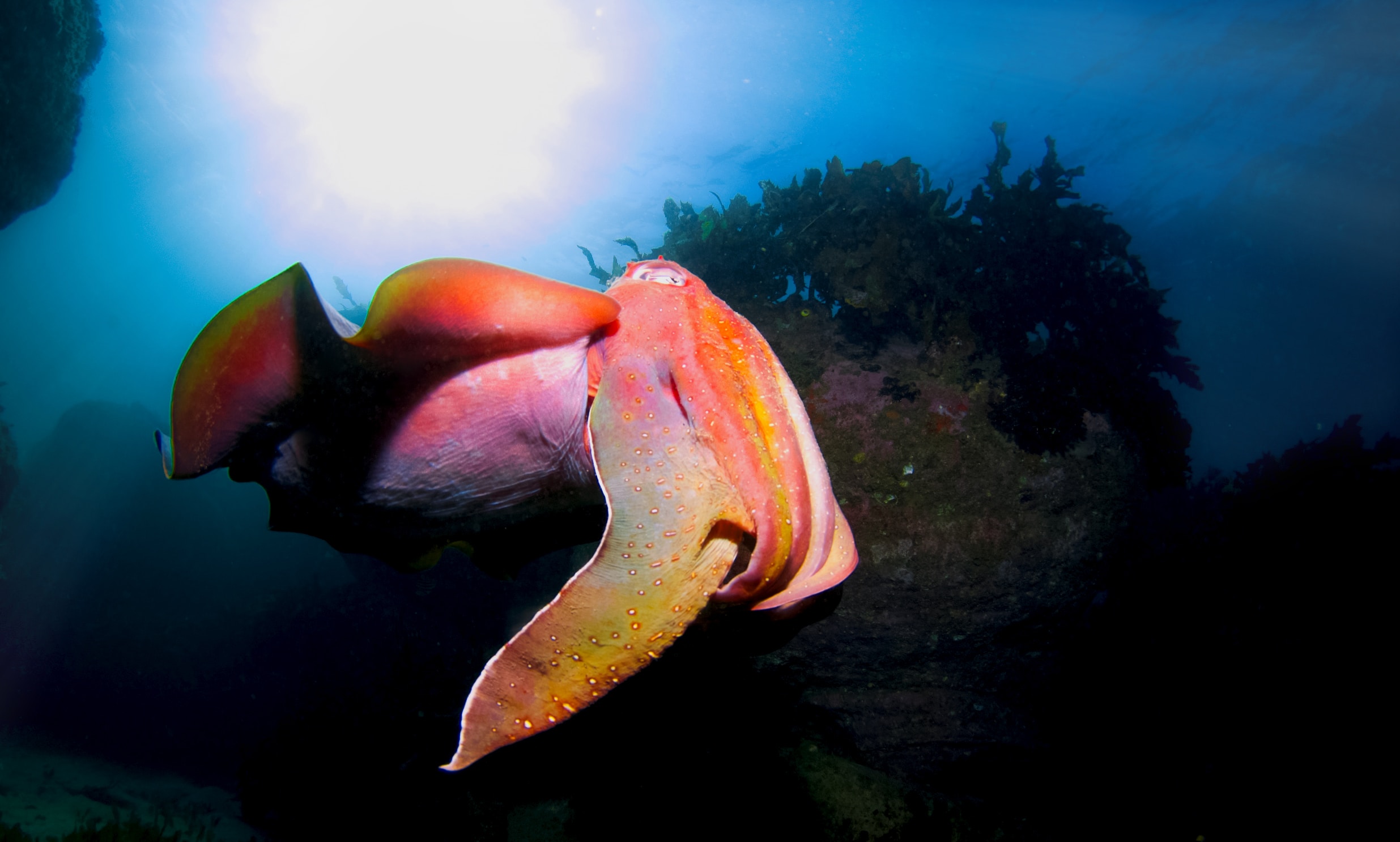Squids are 10-legged sea creatures that are both mesmerizing and mysterious. Belonging to the animal kingdom’s order Teuthida and the family Loliginidae, squids are fascinating cephalopods known for their remarkable adaptability, swift movements, and intriguing features.
Squids have received inaccurate bad-wraps with fictional tales of giant squids pulling boats down under the water. Have no fear and take a moment to dive in to explore the diverse realm of squids, including their various types, size variations, feeding habits, reproduction, lifespan, unique characteristics, and the distinctions between squids and octopuses.
You will quickly discover that these are magical and unique marine creatures that you will come to value and appreciate. Squids are part of the cephalopod family, characterized by their elongated bodies, prominent eyes, and a set of long tentacles and arms. These tentacles and arms are lined with suction cups, known as suckers, which squids use for capturing prey and propelling themselves through the water. They possess a streamlined body that enables them to swim swiftly and skillfully.
Squid Types
There are approximately 300 known species of squids distributed throughout the world’s oceans. Some popular types include the Giant Squid, European Squid, Caribbean Reef Squid, Bigfin Reef Squid, and Japanese Flying Squid. Here is a quick glimpse into some of the popular species:
Giant Squid: The Giant Squid is one of the most elusive and mysterious creatures of the deep sea. With the ability to grow up to 43 feet (13 meters) in length, it is considered the largest squid species. It possesses long tentacles armed with powerful suckers and sharp hooks, making it an efficient predator of the deep ocean.
European Squid: The European Squid, also known as the Loligo squid, is a common species found in the northeastern Atlantic Ocean and the Mediterranean Sea. It has a cylindrical body and reaches lengths of up to 2 feet (60 centimeters). European squids are known for their rapid color changes and their ability to produce ink as a defense mechanism.
Caribbean Reef Squid: Caribbean Reef Squids are small to medium-sized species that inhabit tropical and subtropical waters. They display a unique ability to change color rapidly, communicating and signaling their intentions to other squids. These intelligent creatures possess elongated fins and a characteristic diamond-shaped pattern on their bodies.
Bigfin Reef Squid: The Bigfin Reef Squid, also known as the Oval Squid, is a species found in the Indo-Pacific region. It has a slender, torpedo-shaped body with large fins, allowing it to move swiftly through the water. Bigfin Reef Squids have a fascinating iridescent skin that reflects vibrant colors when exposed to light.
Japanese Flying Squid: The Japanese Flying Squid is a migratory species found in the North Pacific Ocean. Despite their name, they do not actually fly, but rather glide above the water’s surface using their fins. They have a streamlined body and can reach lengths of around 2 feet (60 centimeters). Japanese Flying Squids are commercially important and support fisheries in the region.
Unique Characteristics of Squids:
Squids possess several unique characteristics that make them remarkable creatures of the sea. Their ability to change color rapidly through specialized pigment cells, called chromatophores, enables them to blend into their surroundings and communicate with other squids.
Squids also have a jet propulsion system that allows them to move quickly by expelling water through a siphon. Some species of squids are bioluminescent, emitting light to attract prey or communicate with mates.
Conclusion:
Squids are captivating marine creatures that inhabit the depths of the oceans. With their sleek bodies, agility, and unique characteristics, they continue to intrigue scientists and enthusiasts alike. The various species of squids, such as the Giant Squid, European Squid, and Caribbean Reef Squid, offer glimpses into the incredible diversity of the marine world.
As we strive to understand and appreciate these fascinating cephalopods, it is crucial to protect their habitats and ensure their conservation for future generations to marvel at the wonders of these agile and enigmatic creatures of the deep sea.






























































